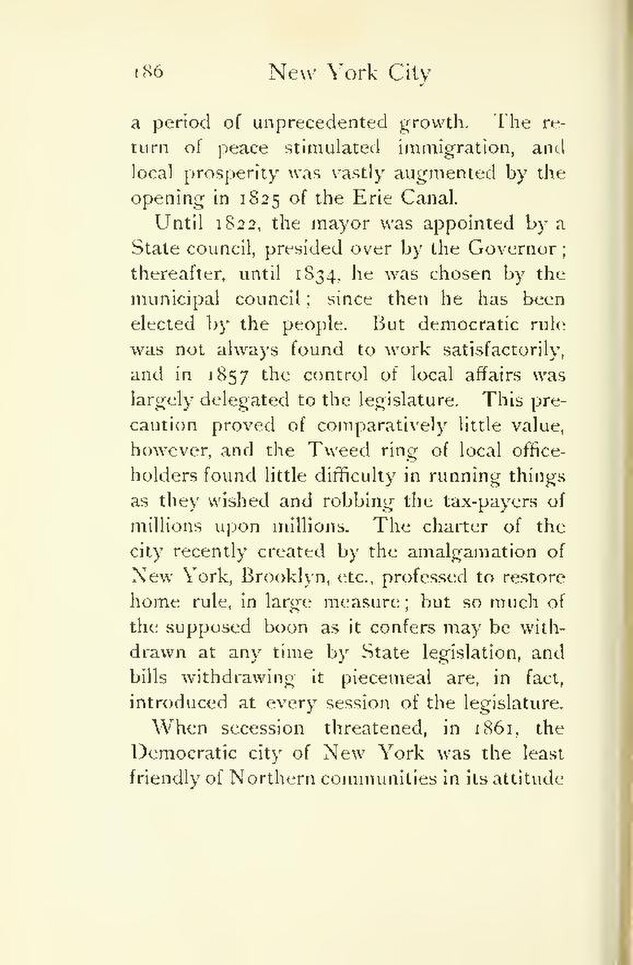a period of unprecedented growth. The return of peace stimulated immigration, and local prosperity was vastly augmented by the opening in 1825 of the Erie Canal.
Until 1822, the mayor was appointed by a State council, presided over by the Governor; thereafter, until 1834, he was chosen by the municipal council; since then he has been elected by the people. But democratic rule was not always found to work satisfactorily, and in 1857 the control of local affairs was largely delegated to the legislature. This precaution proved of comparatively little value, however, and the Tweed ring of local office-holders found little difficulty in running things as they wished and robbing the tax-payers of millions upon millions. The charter of the city recently created by the amalgamation of New York, Brooklyn, etc., professed to restore home rule, in large measure; but so much of the supposed boon as it confers may be withdrawn at any time by State legislation, and bills withdrawing it piecemeal are, in fact, introduced at every session of the legislature.
When secession threatened, in 1861, the Democratic city of New York was the least friendly of Northern communities in its attitude
